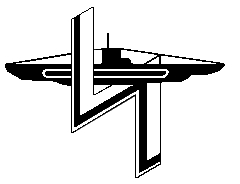German submarine U-262 was a Type VIIC U-boat of Nazi Germany's Kriegsmarine during World War II.

German submarine U-509 was a Type IXC U-boat of Nazi Germany's Kriegsmarine during World War II. The submarine was laid down on 1 November 1940 at the Deutsche Werft yard in Hamburg as yard number 305. She was launched on 19 August 1941, and commissioned on 4 November 1941 under the command of Korvettenkapitän Karl-Heinz Wolff.

German submarine U-504 was a Type IXC U-boat of Nazi Germany's Kriegsmarine during World War II. The submarine was laid down on 29 April 1940 at the Deutsche Werft yard in Hamburg as yard number 294, launched on 24 April 1941 and commissioned on 30 July 1941 under the command of Korvettenkapitän Hans-Georg Friedrich "Fritz" Poske. Initially attached to the 4th U-boat Flotilla for training, the U-boat was transferred to the 2nd flotilla on 1 January 1942 for front-line service. She was a member of six wolfpacks.
Endrass was a "wolfpack" of German U-boats that operated from 12 to 17 June 1942 in attacking Convoy HG 84 that comprised 23 Allied ships. The group was named after the U-boat commander Engelbert Endrass, who had been killed in action in December of 1941.
Blücher was a wolfpack of German U-boats that operated during the World War II Battle of the Atlantic from 14 to 28 August 1942. They attacked the Freetown, Sierra Leone to Liverpool convoys SL-118 and SL-119, and sank six ships for a total of 41,984 gross register tons (GRT), and damaged one (10,552 GRT). The group was named after Gebhard Leberecht von Blücher (1742–1819), a Prussian Generalfeldmarschall in the Napoleonic Wars.
German submarine U-438 was a Type VIIC U-boat of Nazi Germany's Kriegsmarine during World War II.
Hecht was the name of two "wolfpacks" of German U-boats that operated during World War II. The first operated during the Battle of the Atlantic from 8 May to 18 June 1942. They primarily attacked the Liverpool to Halifax convoys ONS 92 and ONS 100, and sank 14 ships for a total of 62,709 gross register tons (GRT).
Hai was a wolfpack of German U-boats that operated from 3 to 21 July 1942 in the Battle of the Atlantic during World War II. They attacked the Liverpool to Freetown, Sierra Leone convoy OS-33, sinking eight ships for a total of 61,125 gross register tons (GRT).
Vorwärts was a wolfpack of German U-boats that operated from 25 August to 26 September 1942, in the Battle of the Atlantic during World War II. They attacked several convoys, principally Convoy ON 127, sailing from Liverpool to New York, and sank fifteen ships for a total of 79,331 gross register tons (GRT), and damaged nine (81,141 GRT).

Carl Emmermann was a German U-boat commander during World War II. In his time as commander, he succeeded in sinking 27 ships for a total tonnage of 152,080 gross register tons (GRT).

Werner Hartenstein was a German naval officer during World War II who commanded the U-boat U-156. He was a recipient of the Knight's Cross of the Iron Cross of Nazi Germany. Hartenstein was credited with sinking 20 ships totaling 97,504 gross register tons (GRT), and with damaging three ships and a destroyer.
German submarine U-652 was a Type VIIC U-boat of Nazi Germany's Kriegsmarine during World War II. The submarine was laid down on 5 February 1940 at the Howaldtswerke yard at Hamburg, launched on 7 February 1941, and commissioned on 3 April 1941 under the command of Oberleutnant zur See Georg-Werner Fraatz.

German submarine U-203 was a German Type VIIC submarine U-boat built for Nazi Germany's Kriegsmarine for service during World War II.

The Attack on Aruba was an attack on oil installations and tankers by Axis submarines during World War II. On 16 February 1942, a German U-boat attacked the small Dutch island of Aruba. Other submarines patrolled the area for shipping and they sank or damaged tankers. Aruba was home to two of the largest oil refineries in the world during the war against the Axis powers, the Arend Petroleum Maatschappij, situated near the Oranjestad harbor, and the Lago Oil and Transport Company at the San Nicolas harbor. The attack resulted in the disruption of vital Allied fuel production.

German submarine U-105 was a Type IXB U-boat of Nazi Germany's Kriegsmarine. She was ordered in May 1938 as part of Germany's naval rearmament program. Her keel was laid down in Bremen in November 1938. After roughly seven months of construction, she was launched in June 1940 and formally commissioned into the Kriegsmarine in September 1940.
Convoy SC 100 was the 100th of the numbered series of World War II Slow Convoys of merchant ships from Sydney, Cape Breton Island to Liverpool. The convoy departed Halifax on 12 September 1942 and was joined on 16 September by Mid-Ocean Escort Force Group A-3. The convoy had been scattered by an equinoctial storm when U-boats found it on 18 September. The ships of Group A-3 were not fast enough to catch surfaced U-boats; and the U-boats sank five scattered ships before losing contact on 25 September. Surviving ships reached Liverpool on 28 September.
Streitaxt (Battleaxe) was a wolfpack of German U-boats that operated during the World War II Battle of the Atlantic from 20 October to 2 November 1942.











